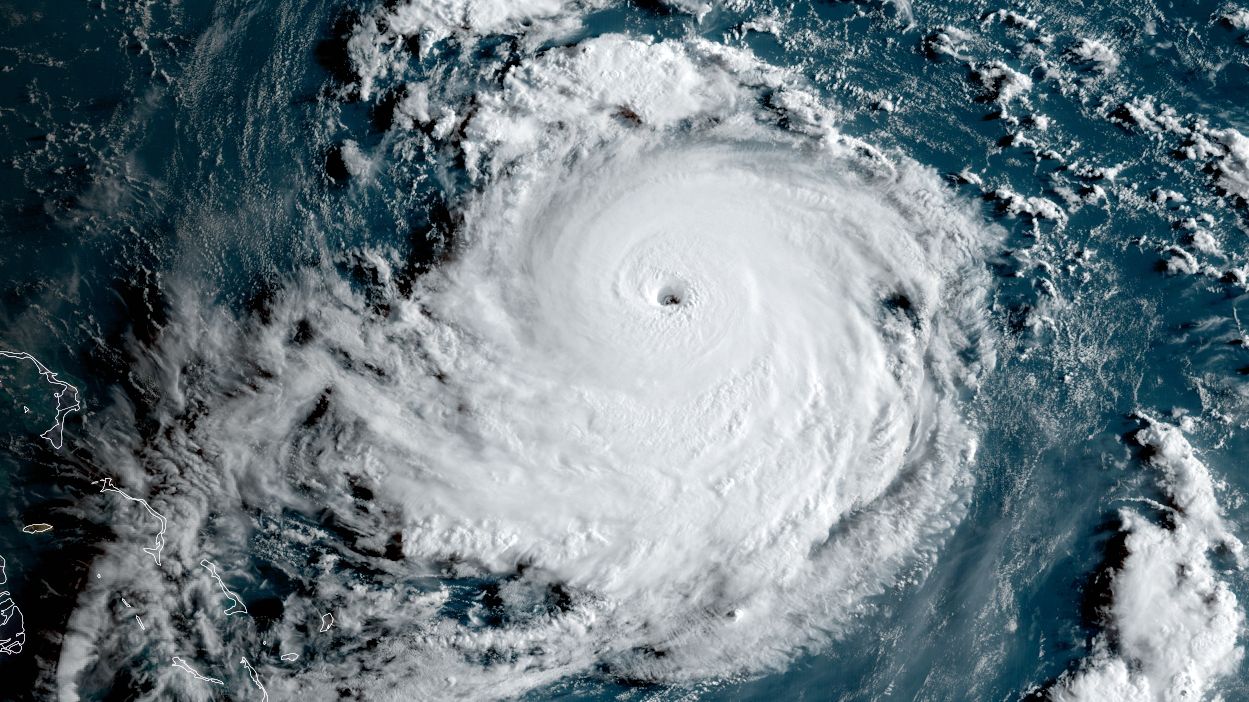Here's what to know about the 2024 Atlantic hurricane names
Storms named after people have occurred since the 1950s. The 2024 Atlantic hurricane season is set to follow up on the 2023 season that saw 20 named storms, with 7 of these becoming hurricanes and 3 of these 7 becoming major (Category 3 or greater) hurricanes. With the expected return of La Niña conditions, Colorado State University is predicting the highest number of storms since it began issuing them in 1995. The World Meteorological Organization (WMO) creates lists of names every six years, with 21 names alternating between male and female. A name may be retired if it is deemed too destructive, the WMO will add a new name to the list each year. Prior to 2021, the Greek alphabet was used to name storms.

Published : 4 weeks ago by Meteorologist Stacy Lynn, Meteorologist Reid Lybarger in Weather
The 2024 Atlantic hurricane season will follow up on a busy 2023 season. The 2023 season totaled 20 named storms, with 7 of those becoming hurricanes and 3 of those 7 becoming major (Category 3 or greater) hurricanes.
Of those hurricanes, Hurricane Idalia was the only hurricane that made landfall in the U.S. last year. It was a Category 3 hurricane with max winds of 125 mph when it moved inland in Keaton Beach, Fla. on Aug. 30.
The other two named storms that made landfall in U.S. were Harold and Ophelia. Tropical Storm Harold made landfall on Padre Island, Texas on Aug. 22 and Tropical Storm Ophelia made landfall near Emerald Isle, N.C. on Sept. 23.
With the expected return of La Niña conditions, forecasts for the upcoming season call for above-normal activity. Colorado State University’s outlook is forecasting the highest amount of storms since it began issuing them in 1995.
Along with the likely transition to La Niña conditions, record-warm tropical and eastern Atlantic sea surface temperatures are a primary factor in the 2024 outlook. Click here for a breakdown of the 2024 Hurricane Season outlook.
How and when are storms named?
A storm gets named when it achieves tropical storm status (winds of 39 mph or higher). It becomes a hurricane when winds reach 74 mph, but keeps the same name. In meteorology, any tropical storm or greater is referred to as a tropical cyclone.
The World Meteorological Organization (WMO) creates lists of names and cycles each list every six years. Each list contains 21 names, alternating between male and female names. A name may be retired if it is deemed too destructive by the WMO and they would add a new name to the list.
According to the National Oceanic and Atmospheric Administration (NOAA), hundreds of years ago, tropical cyclones were named after Saint’s Day, which occurred nearest to the day of the storm. Consider, “Hurricane Santa Ana,” a violent storm that hit Puerto Rico on July 26, 1825.
Before 1950, storms were noted by their latitude and longitude. This proved problematic when trying to relay information to the public. It was confusing, so meteorologists streamlined this process using the phonetic alphabet to name the storms (Able, Baker, Charlie, etc.).
Starting in 1953, storms were given female names. Rumor has it that a member of the committee was angry at his wife and wanted to name a storm after her.
Whether that’s true, Alice was the first named storm of the 1953 season. All-female names continued until 1979, when male names were added to alternate within the list.
Prior to 2021, after the 21 names were exhausted, the Greek alphabet was used. 2005 and 2020 were the only two seasons to feature the Greek alphabet.
However, this proved difficult for several reasons, including what would happen after a storm was so destructive the name should be retired, as was the case for Eta and Iota in 2020. Additionally, coronavirus variants use Greek letters, adding to possible confusion.
To account for these issues, the WMO created a supplemental names list. This list featured another 21 names from A to W that alternate male and female names. This list will remain the same each year, only swapping out a name if it is retired.
Now is the time to reevaluate your hurricane preparedness kit. According to the Federal Emergency Management Agency, your kit should include, at a minimum:
• Water: one gallon per person, per day (3-day supply for evacuation, 2-week supply for home).
• Battery-powered or hand-crank radio (NOAA Weather Radio, if possible).
• Copies of personal documents (medication list and pertinent medical information, proof of address, deed/lease to home, passports, birth certificates, insurance policies).
Depending on your family’s requirements, you may need to include medical care items, baby supplies, pet supplies, and other things, such as extra car and house keys.
Our team of meteorologists dives deep into the science of weather and breaks down timely weather data and information. To view more weather and climate stories, check out our weather blogs section.
Topics: Hurricanes
